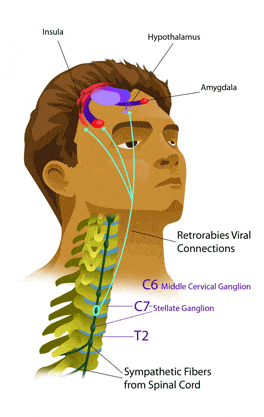Home » Procedures » Neurolytic Blocks
A neurolytic block, also known as neurolysis or neuro-ablative block, is a medical procedure in which a nerve or group of nerves is intentionally damaged or disrupted to provide relief from chronic pain. This procedure is typically considered when other conservative treatments, such as medications or less invasive nerve blocks, have not effectively managed the pain

1. Targeting Specific Nerves: A neurolytic block involves identifying and targeting a specific nerve or group of nerves that are responsible for transmitting pain signals. The goal is to interrupt these pain signals by intentionally damaging or ablating the nerve.
2. Neurolytic Agents: The neurolytic block is achieved by injecting a neurolytic agent near or into the targeted nerve. Common neurolytic agents include:
• Alcohol: Ethanol can be injected to cause nerve degeneration.
• Phenol: A chemical agent that disrupts nerve function.
• Radiofrequency Ablation: High-frequency electrical currents heat and destroy the nerve.
3. Imaging Guidance: The procedure is often performed under imaging guidance, such as fluoroscopy (real-time X-ray), ultrasound, or CT scans. This ensures accurate placement of the needle and precise targeting of the nerve.
4. Confirmation: Before injecting the neurolytic agent, a test injection of a local anaesthetic may be performed to confirm that the targeted nerve is responsible for the pain. If the test injection provides temporary relief, it indicates that the nerve is likely contributing to the pain.
5. Intentional Nerve Damage: Once confirmed, the neurolytic agent is injected to cause intentional damage or degeneration of the nerve. This disrupts the transmission of pain signals from that nerve.
We relieve your pain, helping you be yourself again!

WhatsApp us